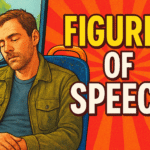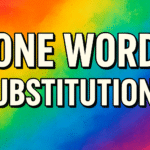Spelling errors happen when words are written incorrectly, deviating from their standard, accepted forms. These mistakes can confuse readers, weaken the credibility of writing, or even change intended meanings. Below is a clear, original explanation of why spelling errors occur, their common types, and practical ways to avoid them.
Why Do Spelling Errors Happen?
Spelling errors often arise because English is tricky—it doesn’t always follow consistent rules, and many words don’t sound the way they’re spelled. Here are the main reasons:
- Irregular Spelling: English words come from many languages (like Latin, French, and German), leading to odd spellings (e.g., knight has a silent K).
- Sound vs. Spelling Mismatch: Some words sound similar but are spelled differently (e.g., write vs. right), or letters are silent (e.g., the B in doubt).
- Lack of Practice: If you don’t often see or write a word, you might guess its spelling incorrectly.
- Typing or Rushing: Fast writing or typing can lead to typos, like missing or swapping letters.
- Language Background: Non-native speakers might apply spelling rules from their first language, which don’t work in English.
Common Types of Spelling Errors
Here are the most frequent kinds of spelling mistakes, with examples to make them clear:
- Mixing Up Similar Sounds (Phonetic Errors):
- You hear the word correctly but pick the wrong letters for the sounds.
- Example: Writing sed instead of said (mixing up short E and AI sounds).
- Why? You might not know which letter combo matches the sound.
- Wrong Letter Choices (Orthographic Errors):
- You choose a logical but incorrect spelling pattern.
- Example: Writing shure instead of sure (using SH for the S sound).
- Why? You’re unfamiliar with the right spelling rule.
- Word Ending Mistakes (Morphological Errors):
- You mess up suffixes or word endings, like plurals or past tense.
- Example: Writing runing instead of running (forgetting to double the N).
- Why? You don’t know how endings change spelling.
- Confusing Sound-Alike Words (Homophones):
- You use a word that sounds the same but means something else.
- Example: Writing your instead of you’re (meaning “you are”).
- Why? The words sound identical, so you pick the wrong one.
- Missing, Extra, or Swapped Letters:
- You leave out, add, or rearrange letters by mistake.
- Example: Writing recieve instead of receive (swapping E and I).
- Why? This often happens when you’re typing fast or not paying attention.
- Silent Letter Errors:
- You forget or add letters that aren’t pronounced.
- Example: Writing rite instead of write (missing the silent W).
- Why? Silent letters are easy to overlook since you don’t hear them.
- Double Letter Confusion:
- You use one letter when two are needed, or vice versa.
- Example: Writing ocasion instead of occasion (using one C).
- Why? You’re unsure which words need doubled letters.
How Spelling Errors Affect You
- Miscommunication: Errors like bear instead of bare can confuse your message.
- First Impressions: In emails, resumes, or posts, mistakes make you seem careless.
- Confidence: Constant errors might make you hesitant to write or try new words.
- Grades or Scores: In school or tests, spelling mistakes can lower your marks.
How to Avoid Spelling Errors
Here are simple, practical tips to spell better:
- Slow Down and Check:
- Read your writing carefully after you finish. Look for words that seem “off.”
- Try reading out loud to catch mistakes you might miss silently.
- Learn Key Rules:
- For example: “I before E, except after C” helps with believe (I before E) vs. receive (E after C).
- Doubling rule: Double the last letter before adding -ING for some words (e.g., run → running, but open → opening).
- Use Memory Tricks:
- For separate, think “sep-A-rate” to avoid writing seperate.








